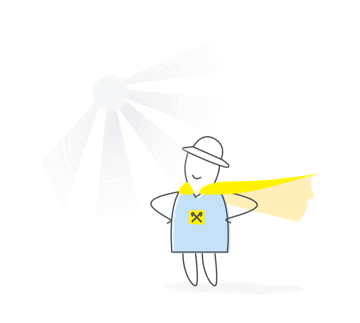What does the dairy market expect after the introduction of new production rules?
Since July, new requirements for the quality of milk and dairy products have come into force in Ukraine. Now all responsibility rests with the entrepreneur. Will the industry pull?
The adopted list of requirements for the quality and safety of milk and dairy products, which were prepared by the Ministry of Agricultural Policy, should bring the dairy industry to a qualitatively different level - though not without consequences.
Reorientation of production
The new conditions apply to all dairy market operators, regardless of ownership. The norms will make it possible to bring Ukrainian legislation in line with EU requirements for veterinary and sanitary rules for the production and circulation of milk, and to determine safety indicators.
According to innovations, processors are required to improve product quality indicators. The document provides for the introduction of risk-based approaches in the formation of sampling frequency, and the responsibility for this lies with market participants.
In accordance with the newly adopted standard, all milk, depending on the level of bacterial contamination, is divided into "extra", highest, first and second grades. And since the beginning of 2020, the concept of "second-class milk" ceases to apply. During this time, milk workers must reorient production and equipment to higher standards. To avoid a fall in the market, until 2022 a special regime is introduced in which such milk can only be handed over for technical needs.
Quality standards relate to the determination of the number of microorganisms, somatic cells, freezing point and density per liter. Also subject to assessment are tanks for storing milk and vehicles for transportation.
Additionally, the requirements for the milking process are established, the safety rules for persons conducting milking and other operations, the norms for heat treatment, the features of packaging and labeling for milk and dairy products.
From now on, the State Consumer Service will only monitor manufacturers for integrity in the framework of the planned inspections. Also, market operators must obtain an operational permit in accordance with the Law on Basic Principles and Requirements for Food Safety and Quality.
Heading for "Extra"
According to the idea of the organizers of innovations, in Ukraine over time, the overall level of milk quality will increase in accordance with European standards. There are already prerequisites for this. The Ministry of Agrarian Policy said that over the past 5 years, the volume of processing of raw materials of the "extra" class doubled and reached 600 thousand tons. The department notes that over the past 2 years, the quality of purchased milk has increased, while the raw materials of the first and second grade decreased in the supply.
“Over the 9 months of 2018, the volume of purchases of extra and premium milk increased by 33.8% and 7.8%, respectively, while the first grade decreased by 8.9% and the second by 15.1%,” - says the First Deputy Minister of Agricultural Policy Elena Kovaleva. She emphasized that milk producers should not be feared, since there is enough time for preparation, as well as funds from state subsidies - this year 3.5 billion UAH is allocated for dairy cattle breeding.
In the analytical agency Infagro, they said that in the first half of 2019, the volume of milk processing from the population decreased by almost a quarter, or 23.5%, from farms by 3%, and the processing of raw milk decreased by 8% compared to last year . First of all, this is a minus for exchange dairy products and, as a consequence, for export. The output of finished products also declined. So, in 2018, Ukrainian companies offered consumers 9.46 million tons of dairy products, which is 1.9% less than for the same period in 2017 (10.387 million tons).
Prices will rise
The decline in milk production caused an increase in prices this year by 11%, and they already exceed the European ones. In addition, the growth of imports of dairy products in our country also negatively affects domestic entrepreneurs. First of all, this applies to cheeses, which in quality can not compete with Dutch or Polish.
In 2019, Ukraine produced 25 thousand tons of cheese, while 5.8 thousand tons were imported, which is 55% more than last year. At the same time, the price of foreign cheese is 10-20% cheaper than domestic. According to the co-owner of the company “Milk Alliance” Alexander Derkach, this situation has developed due to high prices for Ukrainian milk and the insecurity of the market from imports.
“Tell me how our farmer can compete in price with his Polish and Dutch counterparts if they“ sit ”on government subsidies, which are allocated 20% of the EU budget,” Alexander Derkach asks and explains: “If the state does not begin to protect the domestic market from dumping and subsidized imports, animal husbandry in the country will be reduced.
Depending on the quality and volume of purchases, the price of milk ranges from 6 UAH / kg (household) to 10 UAH / kg and even more. In such conditions, Ukrainian producers will not stand the competition and will reduce the number of cattle. This means that prices will rise not only for cheeses, but also for other finished dairy products. For example, oil production this year amounted to 8.8 thousand tons, which is 22% less than last year for the same period. In the domestic market, butter has risen in price to 130-138 thousand UAH / t, and peasant butter to 113-118 thousand UAH / t.
Already in early July, all types of raw materials were in short supply in Ukraine: expensive high-quality milk, household milk, which, when delivered to the factory, was no cheaper than farm raw materials of the first or second grade, the secondary market, and even butter.
What to expect in the future?
Maxim Fasteev, senior dairy market analyst, predicts a decline in processing and a decrease in raw milk exports. Among the main reasons are a drop in demand, low purchase price, and also the quality of milk itself.
“Why did the processors refuse to work with the public? Lack of quality and desire of the manufacturer - the same population - to work on quality. Difficulties in accounting and financial accounting. Therefore, in recent years, work has been carried out mainly through intermediaries. As a result, milk from the population at factories has often become more expensive for processors than high-quality milk from farms, ”he comments. And since intermediaries are increasingly refusing to work for little money, price risks fall mainly on the manufacturer. Households who want to earn money have long begun to sell milk on their own, to unite in cooperatives and open their own processing. Such a situation may lead to a decrease in its supply in the market, weakening of financial support of the population from business, deficit in the winter period and higher prices for milk and dairy products.
At the same time, the analyst emphasizes that with the introduction of the adopted changes, the quality of milk will improve, and a gradual transition to European requirements for the quality of raw materials will be ensured not by administrative, but by market methods.
The European Business Association believes that the adoption of new standards for milk will help to immediately increase the level of product safety. At the same time, it is necessary to strengthen legislative regulation with high-quality state control. Indeed, the degree to which all requirements are fulfilled depends on market operators, and on how transparently and consistently they are concerned with the verification of market operators, without exception, on the state control system.
According to Evgeny Kuzmenko, committee manager for the European Business Association, milk standards are already working for some enterprises, while for others this is a chance to improve production. “We can say that it is unlikely that the consumer will feel a sharp price fluctuation, because a large conscientious dairy business already lives by such standards,” he said. These companies work with high-quality raw materials, and volumes of extra and premium milk make up the predominant share of total production. Each batch passes rigorous quality control and checks every day at all stages of production and turnover, starting with the collection of raw materials, which ensures traceability to each farm.















